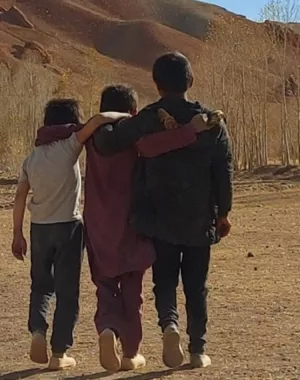Overview
While Afghanistan has long faced humanitarian challenges stemming from decades of conflict and natural disasters, the political changes in August 2021, and the subsequent withdrawal of humanitarian and development actors and freezing of government funds precipitated a deepening crisis. Children, who comprise more than half of Afghanistan’s population, have been the most affected by these events, and are the most vulnerable to future shocks. The service disruptions in all sectors, but particularly education, health, and psychosocial support (PSS) have had a profoundly negative impact on the health and overall well-being of children and other vulnerable populations and have severely threatened the rights of children. At the time of writing, girls’ secondary schools have yet to reopen in the majority of the country, hundreds of thousands of children have returned from Iran or Pakistan or been internally displaced, and over 20 million people - 46% of the population - are food insecure, with 875,000 children expected to suffer from acute malnutrition in 2023. Furthermore, the de facto authorities have just announced a ban on women working for NGOs, not only a significant violation of women’s rights but massively limiting the delivery of aid, and causing a number of major NGOs to pause activities in the country.
In this context, the perspectives and experiences of children remain underrepresented in research. This needs assessment, conducted in Herat, Ghor and Badghis, used a qualitative child-centred and participatory methodological approach, and aimed to contribute to closing the knowledge gaps and to generate high quality in-depth evidence of the situation of children’s rights and well-being in western Afghanistan, in responding to the main research questions.
- What are the key child protection needs at the site level, and how are stakeholders across levels positioned to address these?
- How do youth and children themselves present their perspectives?
- How can War Child UK and other actors best focus their efforts in the identified districts to support high-risk child protection concerns, and avoid support gaps?
From this research, the study then seeks to provide recommendations to War Child United Kingdom (UK) and other actors on how and where to focus efforts in target areas in Western Afghanistan to address high-risk child protection concerns. In addition, this research will contribute to a broader understanding of child protection in the sector. The child-friendly methods adopted seek to ensure that future interventions take into account the perspectives of those most concerned by the issues at hand.

